Neck and shoulder pain — now that’s a sure way to put a kink in your day.
While knots in any muscle group are frustrating, isolated tension in the shoulders and neck is particularly uncomfortable. Find relief today with these nine exercises to relieve neck and shoulder pain.
The Source of Neck and Shoulder Pain
It’s important to understand that feeling discomfort in the neck or shoulder doesn’t necessarily mean that the source of pain itself stems from that same region. Neck pain could be caused by a shoulder impingement, and pain in the shoulder could be stemming from the neck. In fact, tension in either area could be sparked by an injury or alignment issue in the back of the pelvis, or even from as low down as the ankles.
Suffering from a sore neck, back and shoulders? Get our mobility guide to ease pain and soreness.
Get The FREE Mobility Guide To Fix Your Pain Today!
This is because the entire back side of the body is connected via a thin webbing of connective tissue (fascia), known as the superficial back line. Running from your forehead — up and over the crown of the head, down the length of the spine and the back of the legs — to the bottom of your feet, this fascial line is responsible for extending the body and keeping you in an upright position.

Yet because this fascia is all connected, a dysfunction anywhere in the body along this line could lead to pain in another area. For example, incorrect pelvic positioning can lead to misalignment in the low back, which can continue up the thoracic spine, affecting the position and stability of the shoulder, and ultimately causing neck pain (1).
The exercises that I am showing you today will improve your neck and shoulder mobility and stability, which should greatly ease pain connected with these regions. However, if your pain persists, or you’re experiencing sharp-shooting pain in the neck, shoulder or arms, we recommend that you consult with a physical therapist or kinesiologist, who can take a look at your body as a whole.
Common Lifestyle Causes of Neck and Shoulder Pain
Now let’s assume that your current neck and shoulder pain IS actually caused from restriction or instability in the neck and shoulders themselves. Here are three lifestyle factors that could be contributing to your discomfort:
Tech-Neck (Forward Head Posture)
If you’re anything like the average American you could be spending up to eleven hours each day staring at a screen! (2)
Without ergonomics awareness, staring at a computer, smartphone or television screen for hours each day is leading to forward head posture. This causes the neck extensors to stretch, the neck flexors to weaken, and can load an additional 60 pounds of pressure to the back of the neck. Pain aside, forward head posture can also inhibit breathing capacity, lead to migraines and cause brain fog.
Solution: Keep your neck in neutral alignment throughout the day (3), and take a tech-timeout as often as you can.
Reaching Forward (Rounded Shoulder Posture)
In addition to pulling your neck forward, our chronic use of computers and phones — as well as other lifestyle habits such as driving, cooking, and spin classes — is causing rounded shoulder posture. By living life with your arms primarily in front of you, the chest gets overly tight and the mid and upper back weaken; this instability is a common cause of neck and shoulder pain.
Solution: Skip the chest press for a while and focus on exercises that strengthen the trapezius, rhomboids and latissimus dorsi muscle groups on the back side of the body.
Feeling Stressed
Stress not only causes mental tension, but physical tension as well; as your sympathetic nervous system fires up (getting you ready to fight-or-take-flight), so does your body. The problem is that this physical response likely occurs when you’re sitting at your desk or in your car, so instead of being able to release the energy from your tightly coiled muscles, the pressure in your body remains, which can lead to neck and shoulder pain.
Solution: Reduce stress by practicing deep breathing exercises throughout the day.
Looking for more stretches to reduce pain? Try these:
- Hip stretches: 13 Feel-Good Hip Openers
- Lower back pain: 13 Stretches for Lower Back Pain
- Sciatica: Sciatica: What It Is, Common Causes, and How to Fix It
9 Exercises to Relieve Neck and Shoulder Pain
This sequence is designed to be completed from start to finish; I’ve arranged it into four sections for maximum relief:
Upper back mobility: A flexible upper back places less stress on your neck and shoulders.
Neck mobility: In order to reposition your neck to its optimal neutral alignment, we must first move it gently through a full range of motion.
Shoulder rotations: These exercises are designed to open the chest and shoulder and reverse forward shoulder posture while gently strengthening the muscles that support the mid back.
Alignment: The sequence finishes with two alignment exercises to help you return to an optimal neck and shoulder position
Open Book | 5 reps per side
Start by lying on your side with your knees bent in front of your hips and hands over your ears, elbows pointing forward. Inhale and reach the top elbow to the ceiling, looking up at the elbow point. Exhale and continue to open the top elbow to the back side until it touches the floor or an elevated prop such as a pillow (to decrease range of motion). Stay for a full inhale and exhale, relaxing your shoulders, inhale again, then exhale and return to the starting position.
Tip: Keep your knees stacked and resting on the floor; move slowly and imagine that you are unwinding the top half of your spine.
Thoracic Extension | 3-5 reps
Start seated on the floor with your mid back resting on a foam roller or a rolled-up bath towel. Support the head in the hands, elbows wide, and keep the feet on the floor. Inhale to prepare. Exhale and slowly extend your spine back over the roller, only moving as far as you need to until you feel a gentle stretch in the upper back, chest and abdominals. Inhale to hold. Exhale and return to the starting position, using your abdominals.
Tip: Start with a small range of motion and gently increase this over time; you should feel no discomfort in your low back during this exercise.
Head Tilt | 2 min
Start in a comfortable seated or kneeling position, with the head stacked directly above the shoulders and the arms resting by the sides. Inhale to prepare. Exhale and slowly and gently lower the left ear towards the left shoulder, only so far as you need to feel the beginning of the stretch. Inhale to hold. Exhale and return to the top. Repeat to the left side, pausing on the inhale breath and moving on the exhale. Next, exhale and turn your head to look over the right shoulder. Inhale and return to center. Exhale, look over the left shoulder. Continue to slowly alternate between each position.
Tip: There are many small muscles to stretch between positions A and B. Take your time throughout the movement phase to gently release each muscle.
Neck Roll | 3 circles per side
Start in a comfortable seated or kneeling position, with the head stacked directly above the shoulders and the arms resting by the sides. Inhale to prepare. Exhale and slowly and gently lower the left ear towards the left shoulder, and then take the chin towards the chest. Inhale as you continue to circle, taking the right ear towards the right shoulder, and finishing by stacking the head above the shoulders in your starting position. Reverse the circle.
Tip: Match the pace of movement to your slow breaths, exploring each position as you transfer through it.
Shoulder Shrug | 10 reps
Start in a comfortable seated or kneeling position, with the head stacked directly above the shoulders and the arms resting by the sides. Inhale and lift the shoulders up towards the ears. Exhale and return them down, feeling the blades settle on the back.
Tip: This move strengthens and releases the muscles in the upper back.
Kneeling Arm Circle | 3-5 reps per arm
Start in a high kneeling position or seated on a chair, with the head stacked directly above the shoulders and the arms resting by the sides, palms facing in and thumb forward. Inhale, reach the left arm straight up to the ceiling, and pause. Exhale, rotate the palm away from your body, and continue to circle the arm until it is back down by the hip, palm facing out and baby finger forward. Inhale and begin to reverse the circle, stretching the arm behind you and up to the ceiling. Pause. Exhale, rotate the palm back to the body, stretch the arm all the way forward and return it down by your side, palm facing in.
Tip: Really stretch out through your arm as you make this circle, taking up as much space in the room as you can; keep you head, neck and hips relaxed.
Wing Span | 2 min
Start in a high kneeling position or seated on a chair, with the head stacked directly above the shoulders and the arms stretched directly out to the side, in line with the shoulders, palms forward. Inhale to prepare. For one long exhale: reach the arm up overhead, palm forward; the left arm down by your hip, palm back; bend the elbows and reach the fingers towards each other at the center of your back. Stay for a full inhale and exhale. Inhale again to return to the starting position. Exhale to repeat on the other side. Continue slowly alternating between each position.
Tip: It doesn’t matter if you can’t touch your fingertips, over time you will be able to!
Scapula Slide | 10-15 reps
Start on all fours, wrists under shoulder and knees under hips, with a long flat back. You must press firmly into your palms and fingertips to feel the engagement through your mid back. Keeping the elbows STRAIGHT, inhale and slide the shoulder blades (scapula) together (you’ll feel as if you’re dropping your chest to the floor). Exhale, press into the hands and return to the starting position.
Tip: You must keep your elbows straight! If this is challenging to do on all fours, stand up and place your hands against the wall to perform the exercise.
Neck Retractions | 6-8 reps
Start by lying on your back, knees bent, arms down by the side and the eyes straight up to the ceiling. Inhale, gently jut the chin forward to the ceiling, keeping the back of the head on the floor. Exhale, retract the chin in towards the throat, and feel the back of the neck lengthen.
Tip: Don’t jut the chin forward too much; it’s a small move. Focus on lengthening the neck against the floor during the retraction phase.
(Your Next Workout: 7 Easy Exercises for Mild to Severe Lower Back Pain)




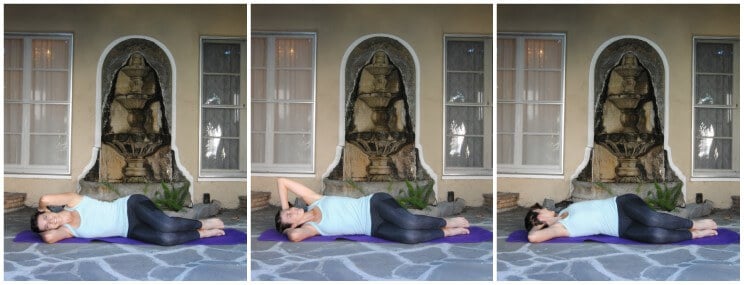
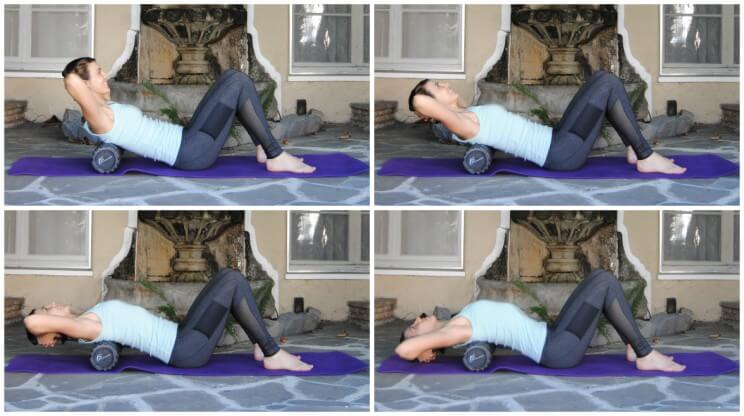
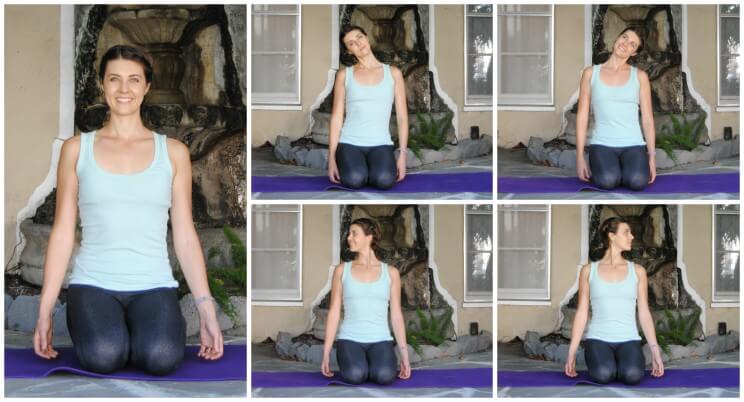
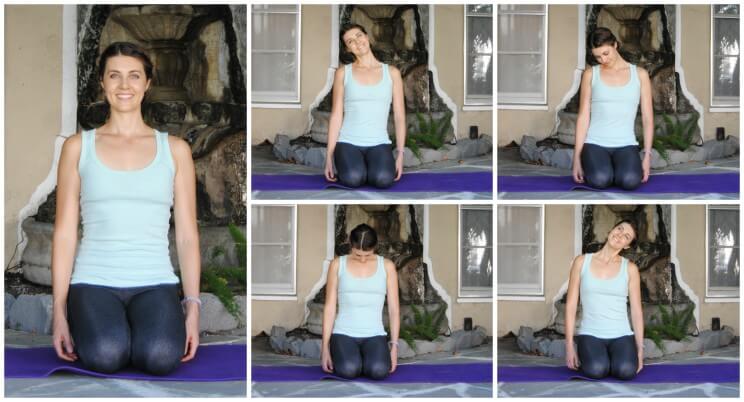
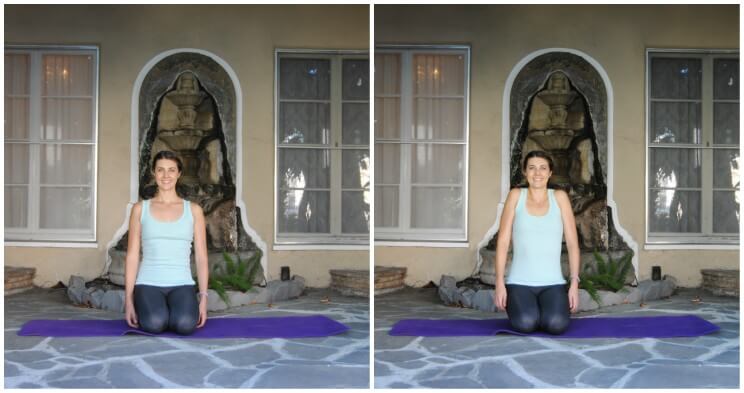
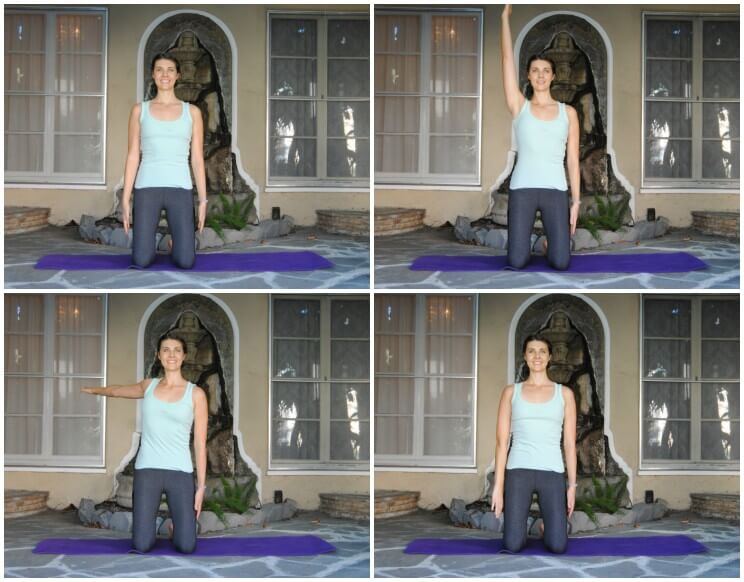
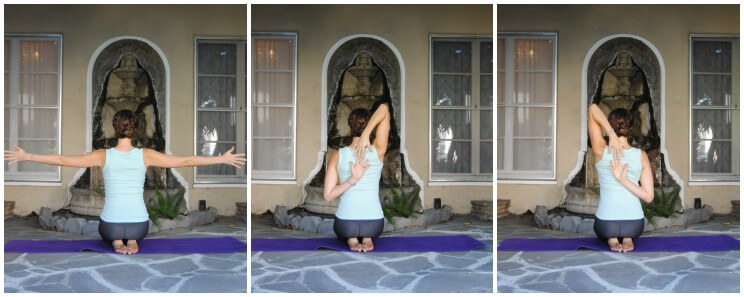
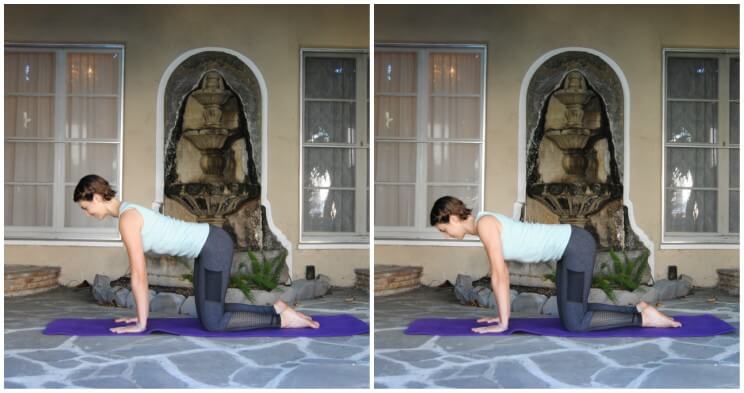
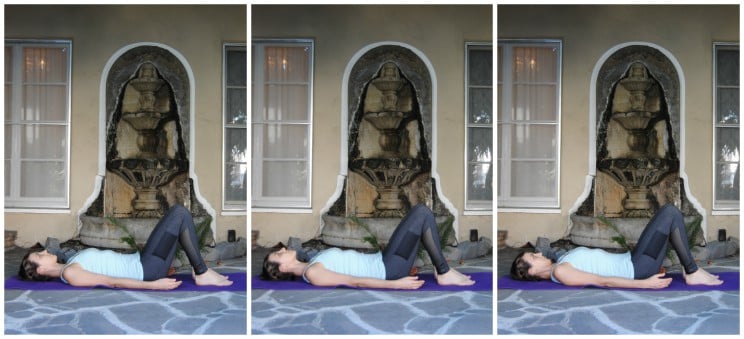


 8 Coffee Brewing Methods & Their Different Benefits
8 Coffee Brewing Methods & Their Different Benefits
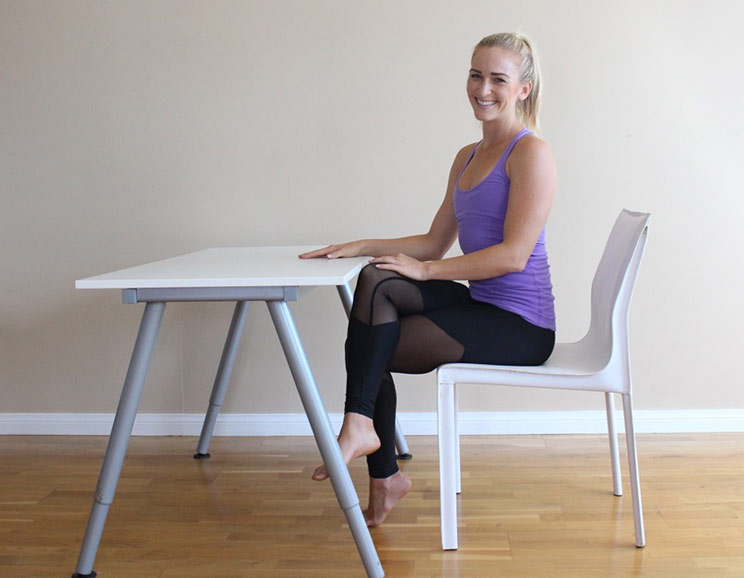

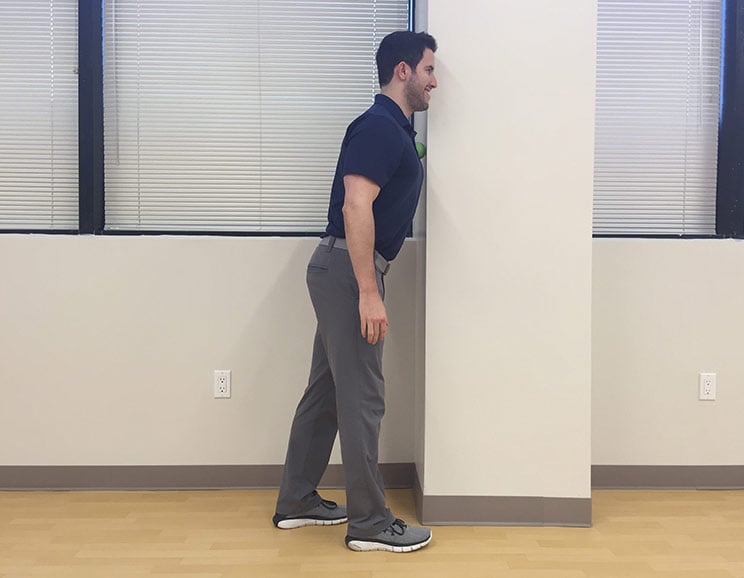
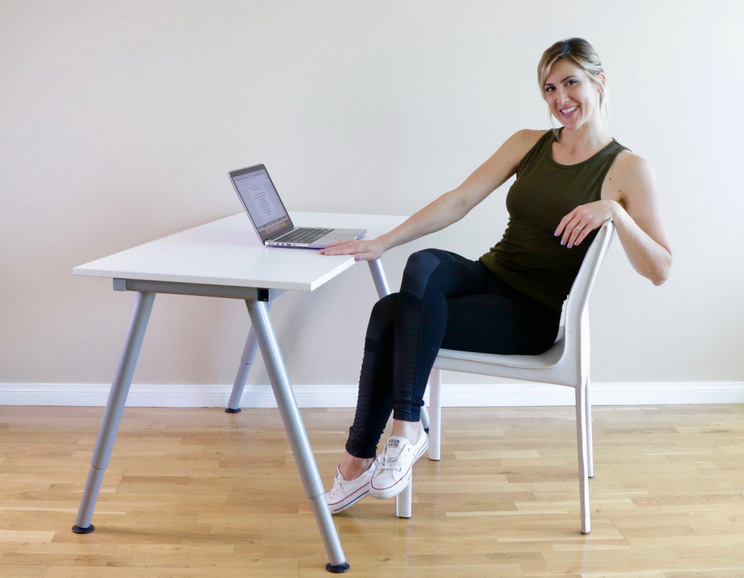
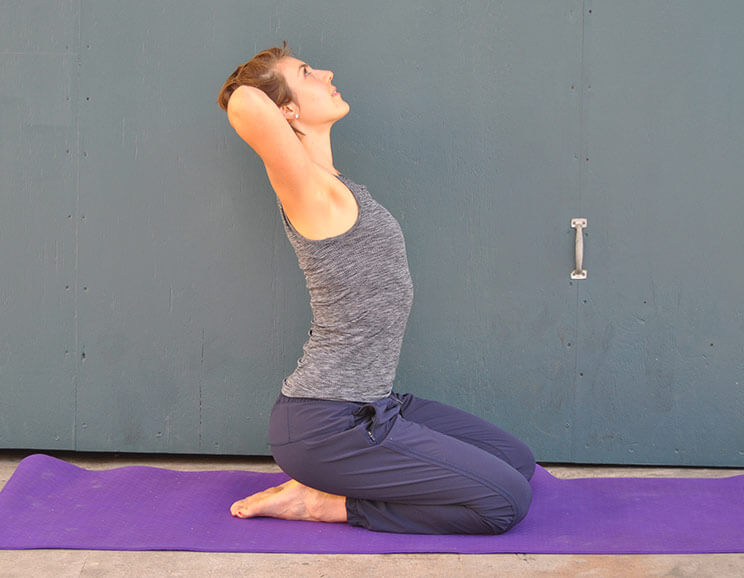
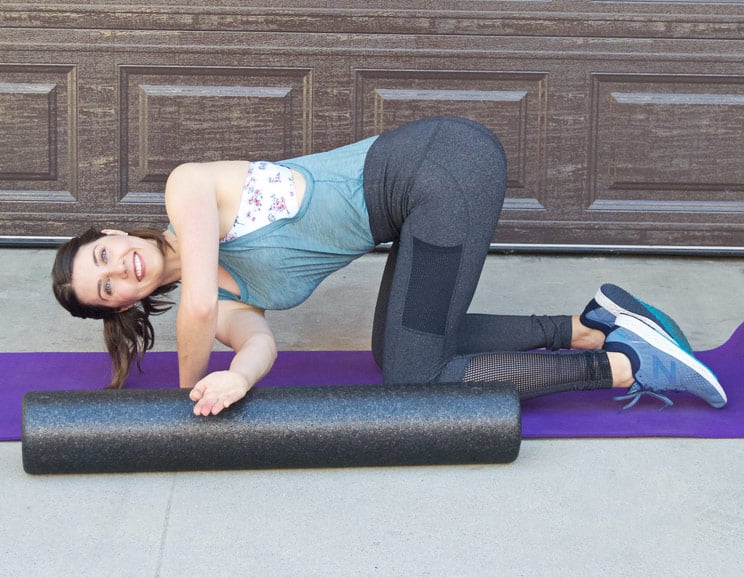
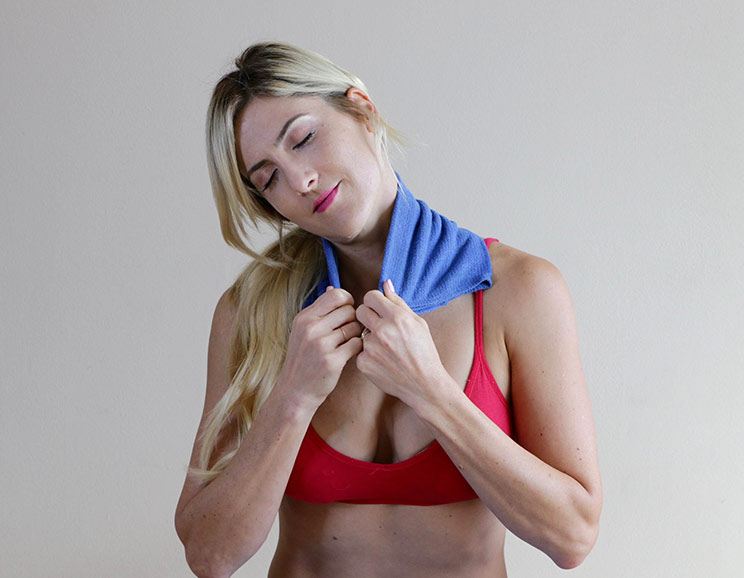
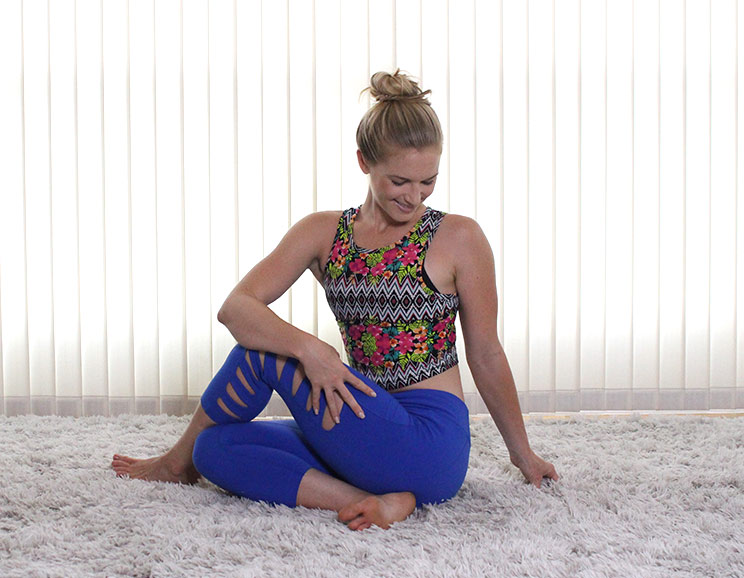
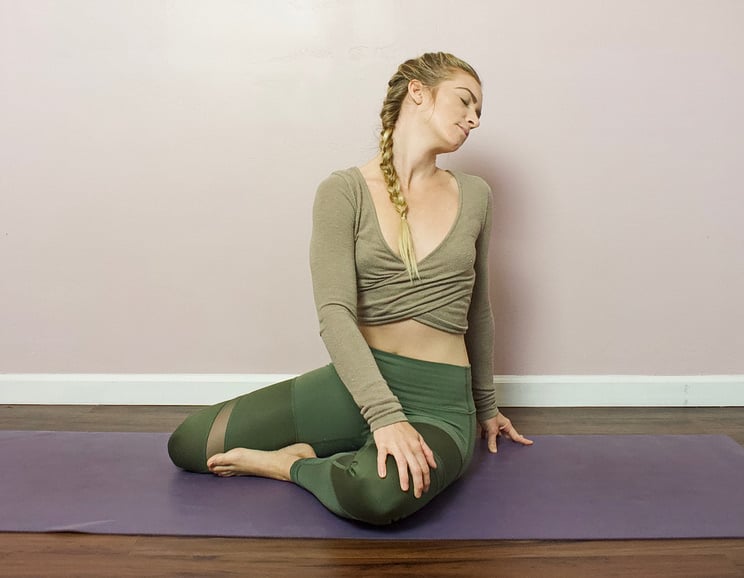
Show Comments